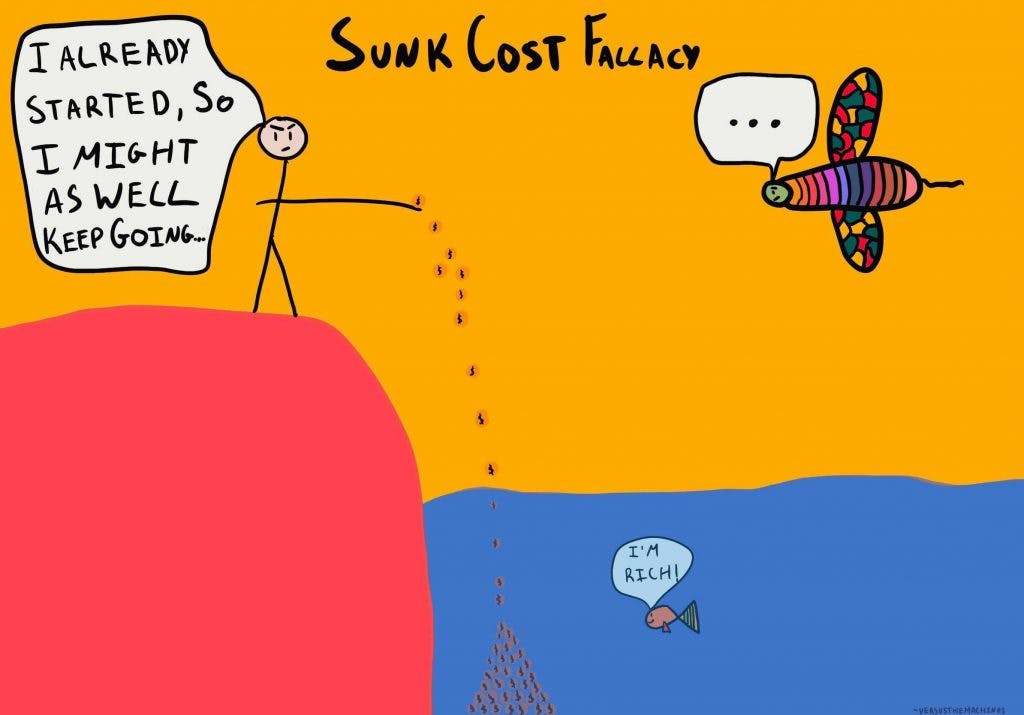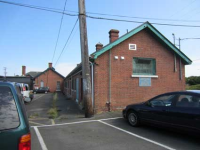I'll believe it when I see it.
You are using an out of date browser. It may not display this or other websites correctly.
You should upgrade or use an alternative browser.
You should upgrade or use an alternative browser.
Justin Trudeau hints at boosting Canada’s military spending
- Thread starter Maxman1
- Start date
OldSolduer
Army.ca Relic
- Reaction score
- 15,723
- Points
- 1,260
Excuse me but I’ve paid into things like this since I was 18.Largest line in the Government Operations budget. But definitely not the largest line item in the overall budget. That's old fart pogey (OAS).
FJAG
Army.ca Legend
- Reaction score
- 13,901
- Points
- 1,160
Whereas the Avro Arrow project was one where the government said, "Nope!"The Concorde fallacy is a famous example of sunk costs impacting large-scale decisions.
The A380 was just as much a niche produce and it didn't last much longer. I don't think anyone anticipated the level of resistance encountered. Customers for the concorde, and there were a number of them, found that there would be very few places to which they could operate as the politicians were slamming the doors so they cancelled their orders.Worth dwelling on this huge money water for a bit
Government
The sunk cost fallacy is also prevalent in the political sphere, where it can influence policy decisions and spending. Governments may continue to fund large-scale projects that are no longer effective or relevant, simply because of the significant resources already committed. Politicians might fear the political repercussions of abandoning the project, as it could be perceived as a waste of taxpayer money. However, continuing to invest in ineffective policies or projects because of sunk costs can lead to further inefficiencies and missed opportunities for better solutions.
The Concorde fallacy is a famous example of sunk costs impacting large-scale decisions. In 1956, the Supersonic Transport Aircraft Committee met to discuss building a supersonic airplane, the Concorde. French and British engine manufacturers and their governments were involved in the project, which was estimated to cost almost 100 million dollars. Long before the project was over, it was clear that there were increasing costs and that the financial gains of the plane, once in use, would not offset them. However, the project continued. The manufacturers and governments followed through on the project because they had already made significant financial investments and dedicated a lot of time to the project. Ultimately, this led to millions of dollars wasted, and the Concorde operated for less than 30 years.

The Sunk Cost Fallacy - The Decision Lab
The Sunk Cost Fallacy describes our tendency to follow through on an endeavor if we have already invested time, effort, or money into it, whether or not the current costs outweigh the benefits.thedecisionlab.com
Fabius
Sr. Member
- Reaction score
- 1,088
- Points
- 810
Excuse me but I’ve paid into things like this since I was 18.
Things like this might include CPP and EI, but no one has ever paid into OAS. It’s funded directly and solely by the federal governments general revenue.
By virtue of paying taxes going into general revenue, you ( a generic you) could consider yourself to have supported a OAS system but there is no OAS account that anyone has contributed to in the same sense as CPP.
Removing OAS may be political suicide but lowering the level of allowable income while still drawing OAS is likely less politically damaging.
- Reaction score
- 22,090
- Points
- 1,260
However sometimes making something simply to make it/do it, is a worthwhile national endeavor.Worth dwelling on this huge money water for a bit
Government
The sunk cost fallacy is also prevalent in the political sphere, where it can influence policy decisions and spending. Governments may continue to fund large-scale projects that are no longer effective or relevant, simply because of the significant resources already committed. Politicians might fear the political repercussions of abandoning the project, as it could be perceived as a waste of taxpayer money. However, continuing to invest in ineffective policies or projects because of sunk costs can lead to further inefficiencies and missed opportunities for better solutions.
The Concorde fallacy is a famous example of sunk costs impacting large-scale decisions. In 1956, the Supersonic Transport Aircraft Committee met to discuss building a supersonic airplane, the Concorde. French and British engine manufacturers and their governments were involved in the project, which was estimated to cost almost 100 million dollars. Long before the project was over, it was clear that there were increasing costs and that the financial gains of the plane, once in use, would not offset them. However, the project continued. The manufacturers and governments followed through on the project because they had already made significant financial investments and dedicated a lot of time to the project. Ultimately, this led to millions of dollars wasted, and the Concorde operated for less than 30 years.

The Sunk Cost Fallacy - The Decision Lab
The Sunk Cost Fallacy describes our tendency to follow through on an endeavor if we have already invested time, effort, or money into it, whether or not the current costs outweigh the benefits.thedecisionlab.com
—> going to the moon for instance.
- Reaction score
- 8,329
- Points
- 1,160
Things like this might include CPP and EI, but no one has ever paid into OAS. It’s funded directly and solely by the federal governments general revenue.
By virtue of paying taxes going into general revenue, you ( a generic you) could consider yourself to have supported a OAS system but there is no OAS account that anyone has contributed to in the same sense as CPP.
Removing OAS may be political suicide but lowering the level of allowable income while still drawing OAS is likely less politically damaging.
Just like nobody has directly contributed to a National Defence fund, or to the pensions drawn on our 2% contribution?
lenaitch
Army.ca Veteran
- Reaction score
- 3,749
- Points
- 1,160
I think there is a difference between government and commercial funding of undertakings. Governments should fund things like pure or fundamental science; things that advance humanity, knowledge, etc. for their own sakes. For-profit industry won't because there is nothing in it for them. Other than spin-offs (Tang, anyone?) there is no way private money was going to put a man on the moon. Even now, NASA is still primarily focused on science and exploration and industry has taken over the payload/tourist launching earth orbit business that NASA pioneered.However sometimes making something simply to make it/do it, is a worthwhile national endeavor.
—> going to the moon for instance.
- Reaction score
- 8,329
- Points
- 1,160
I think there is a difference between government and commercial funding of undertakings. Governments should fund things like pure or fundamental science; things that advance humanity, knowledge, etc. for their own sakes. For-profit industry won't because there is nothing in it for them. Other than spin-offs (Tang, anyone?) there is no way private money was going to put a man on the moon. Even now, NASA is still primarily focused on science and exploration and industry has taken over the payload/tourist launching earth orbit business that NASA pioneered.
It was private money that financed the great age of exploration, the agricultural revolution, the industrial revolution, railways and canals and the great shipping lines. Bell was a private company.
It is only since WW2 that government has become the go to investor with the deepest pockets.
quadrapiper
Sr. Member
- Reaction score
- 493
- Points
- 810
The first, not so much, especially at its start: lots of government funding until it became clear there was profit to be made, and even then the RN and some other navies were quite keen on the "poke around and see what's out there" aspect for a good two hundred years....the great age of exploration... railways and canals...
Space is at the HBC/HEIC stage, more or less, with fewer armed corporate forces and more poorly dressed executives.
Railways and canals have, depending where you're looking at, flip-flopped around every funding model imaginable, from pure taxpayer to pure private, with every conceivable mixture of the two being attempted.
Fabius
Sr. Member
- Reaction score
- 1,088
- Points
- 810
Just like nobody has directly contributed to a National Defence fund, or to the pensions drawn on our 2% contribution?
Indeed. What 2% pension contribution are you talking about? Neither CPP or the CAF pension has contribution rates of 2%.
- Reaction score
- 6,089
- Points
- 1,090
Infrastructure can be defence spending. Halifax Dockyard needs to be storm surge proofed due to climate change sea rise. So does the infrastructure that brings sailors to dockyard, like the roads. I’m sure spending military money to improve housing and infrastructure around the bases could be finangled to count to the 2%. Same thing with strategic transport route. Dual use ports and airfields in the arctic are another good example.
lenaitch
Army.ca Veteran
- Reaction score
- 3,749
- Points
- 1,160
Much of the 'age of exploration' was funded or backstopped by the various crowns of Europe and, in some cases, undertaken directly by their navies, certainly in latter years.It was private money that financed the great age of exploration, the agricultural revolution, the industrial revolution, railways and canals and the great shipping lines. Bell was a private company.
It is only since WW2 that government has become the go to investor with the deepest pockets.
daftandbarmy
Army.ca Dinosaur
- Reaction score
- 32,541
- Points
- 1,160
Infrastructure can be defence spending. Halifax Dockyard needs to be storm surge proofed due to climate change sea rise. So does the infrastructure that brings sailors to dockyard, like the roads. I’m sure spending military money to improve housing and infrastructure around the bases could be finangled to count to the 2%. Same thing with strategic transport route. Dual use ports and airfields in the arctic are another good example.
Meanwhile, our brick bulwark against the resurgent Chinese Dragon

daftandbarmy
Army.ca Dinosaur
- Reaction score
- 32,541
- Points
- 1,160
Similar threads
- Article
- Replies
- 546
- Views
- 231K
- Replies
- 28
- Views
- 13K
- Replies
- 3
- Views
- 3K
- Replies
- 34
- Views
- 13K
- Replies
- 294
- Views
- 55K



